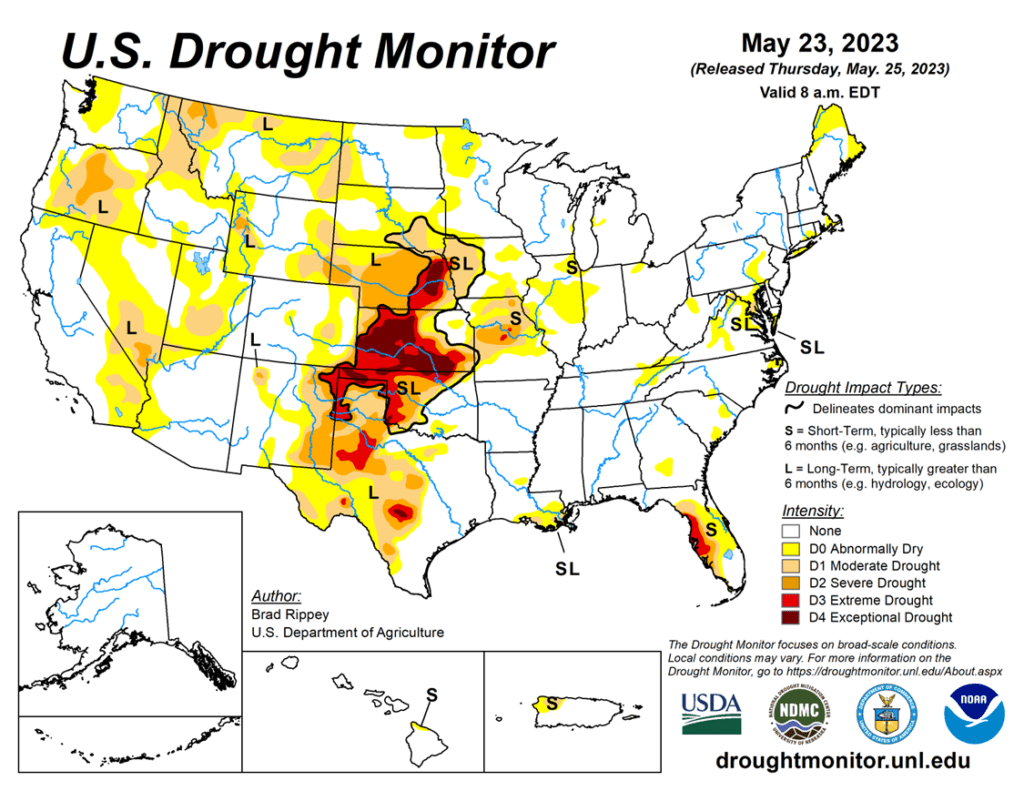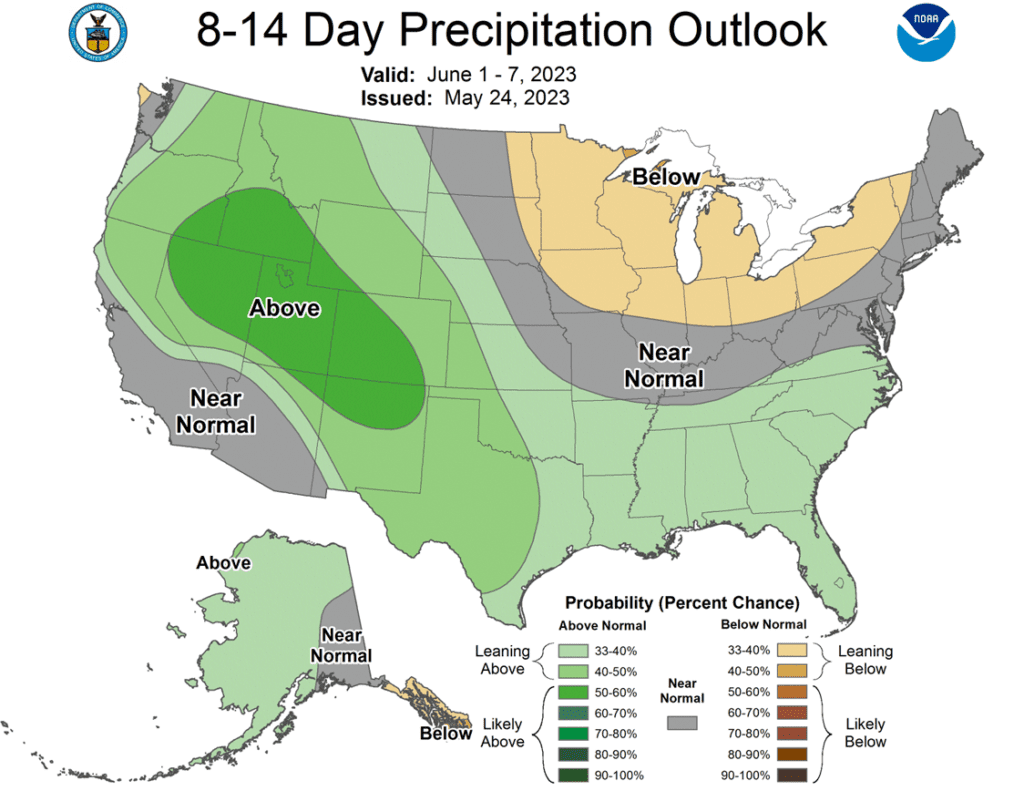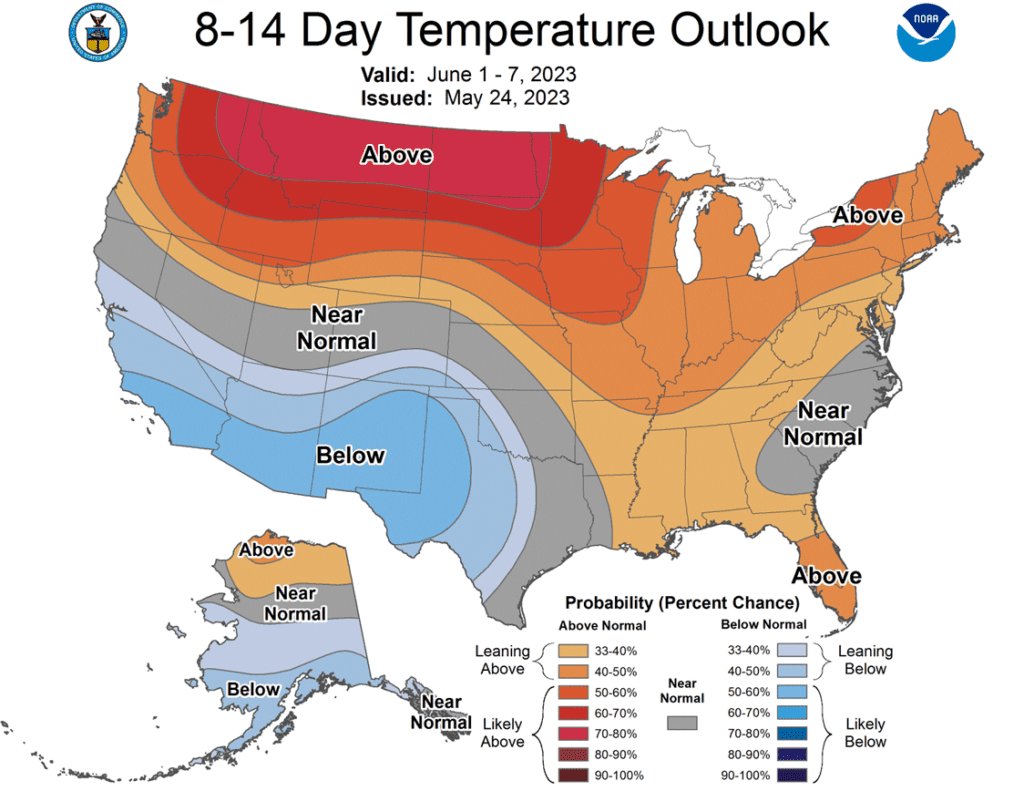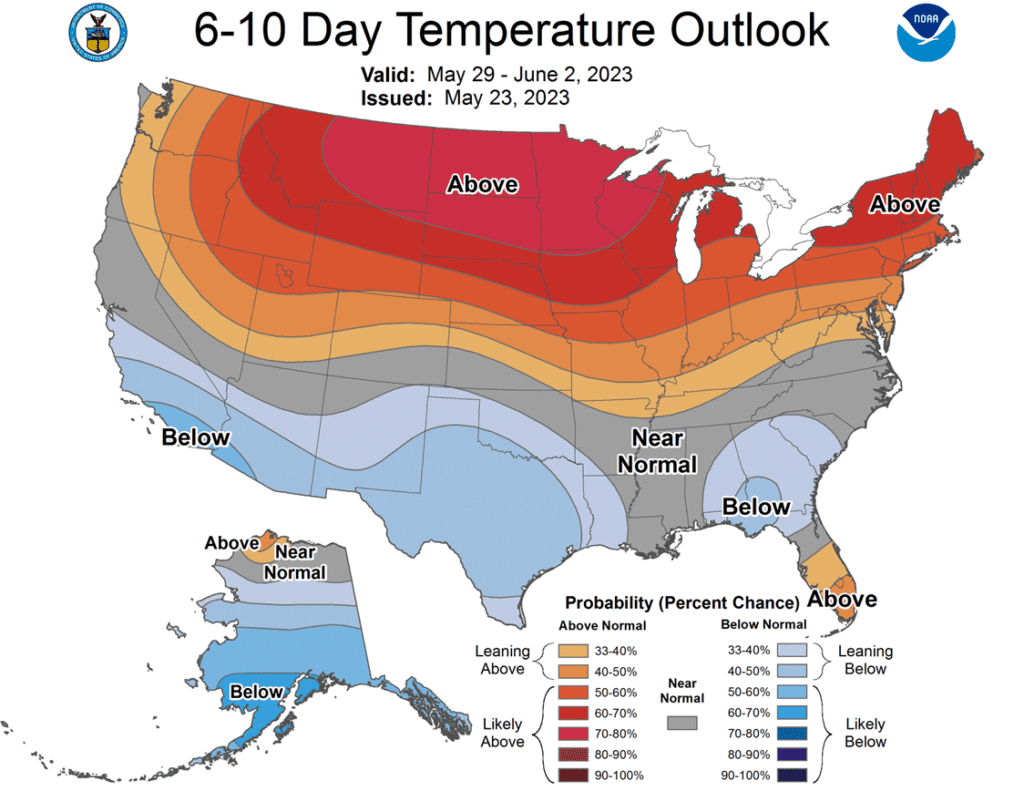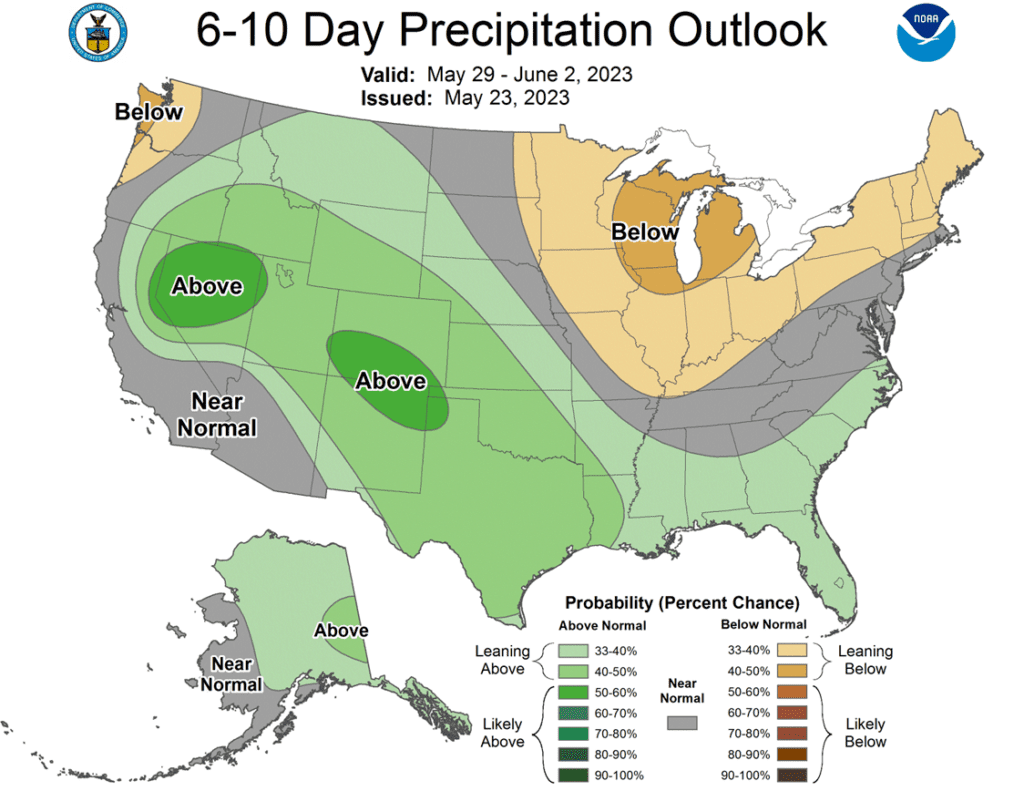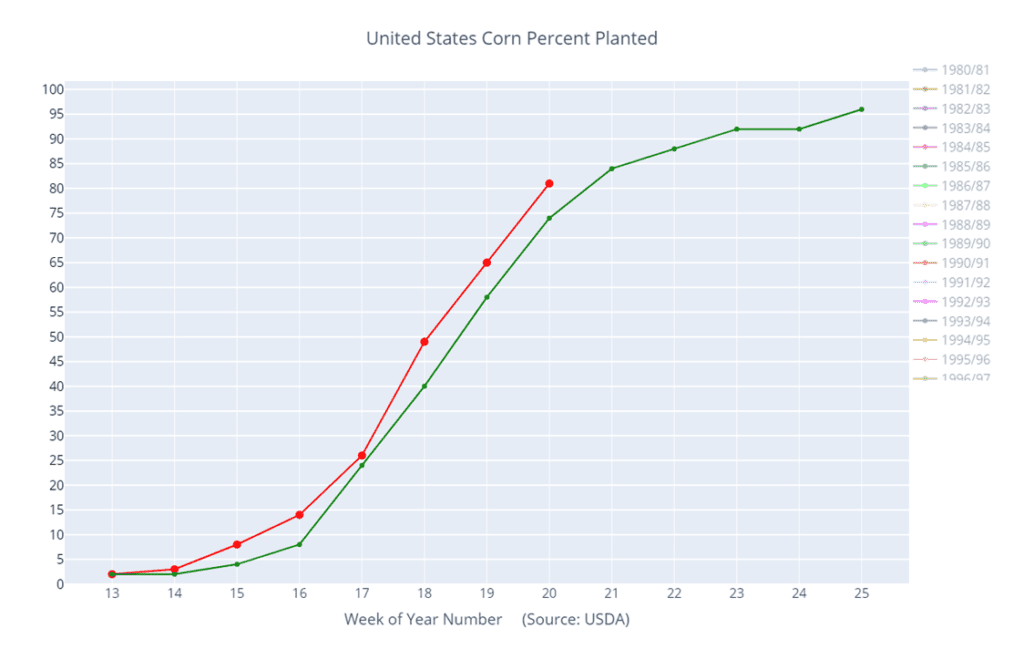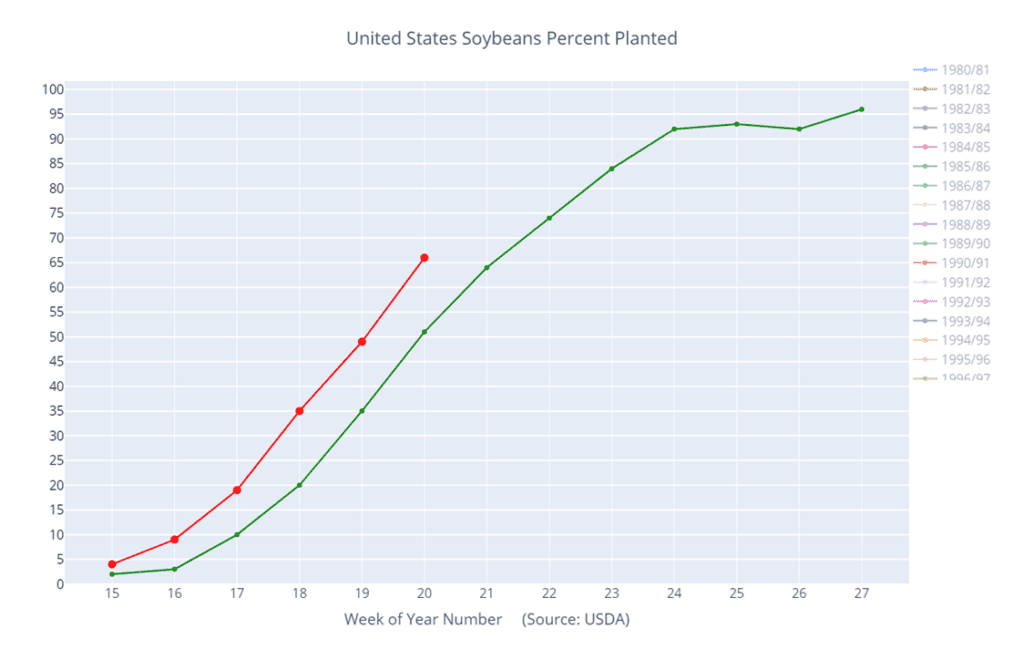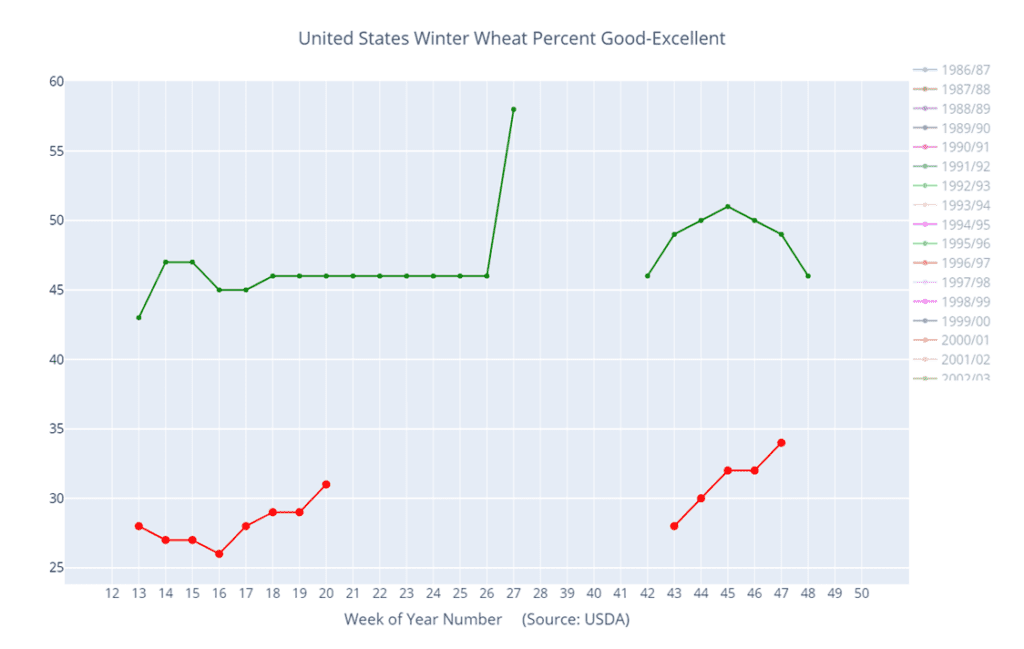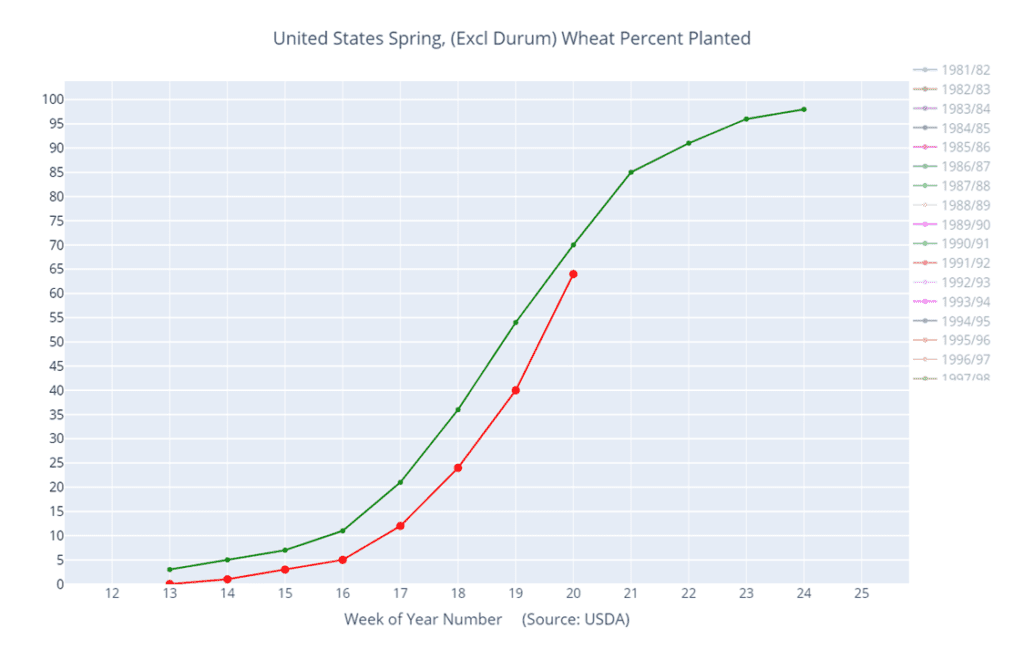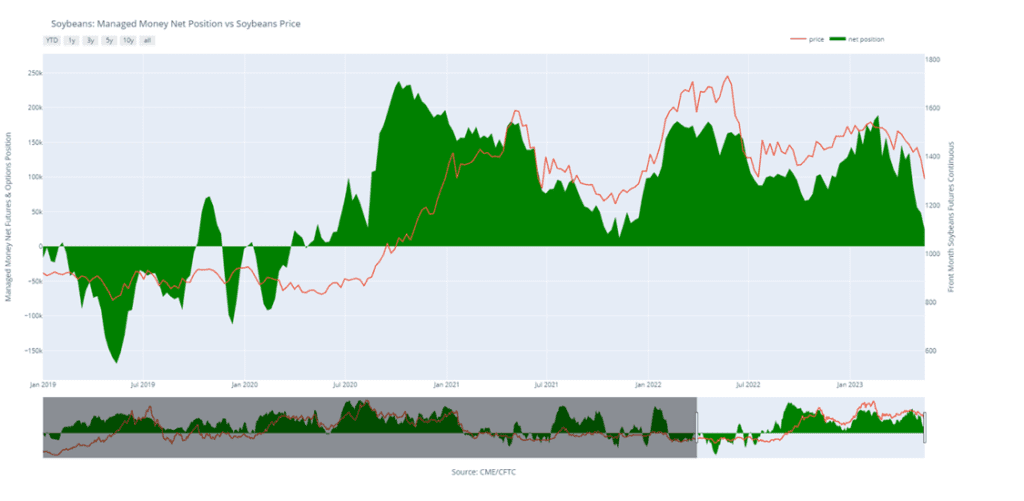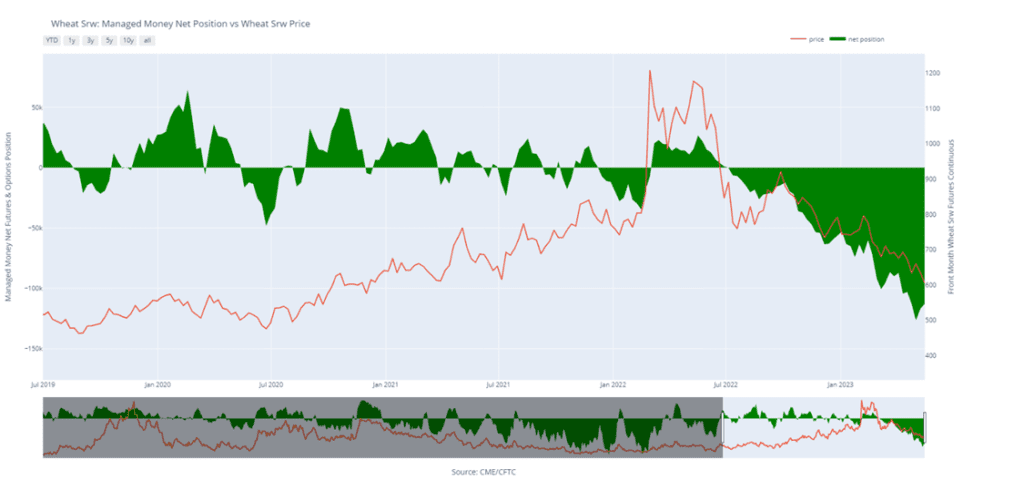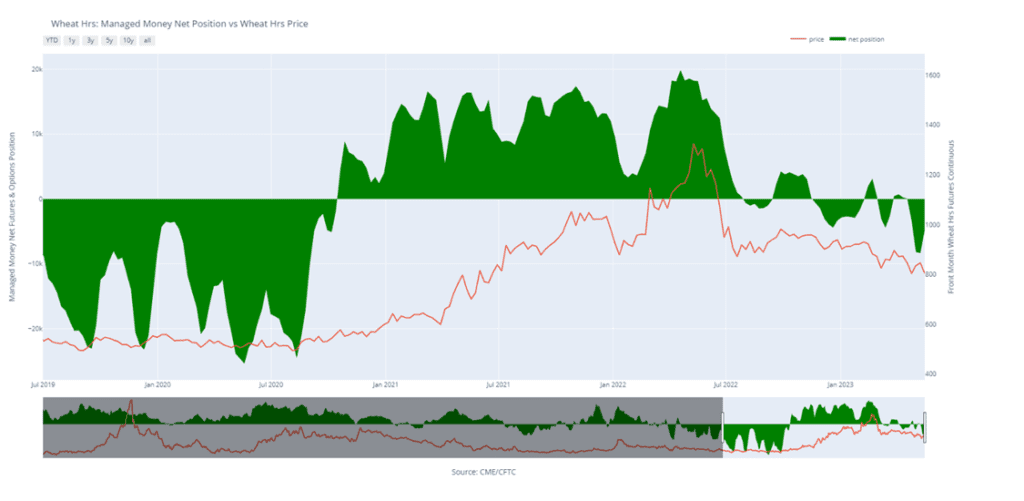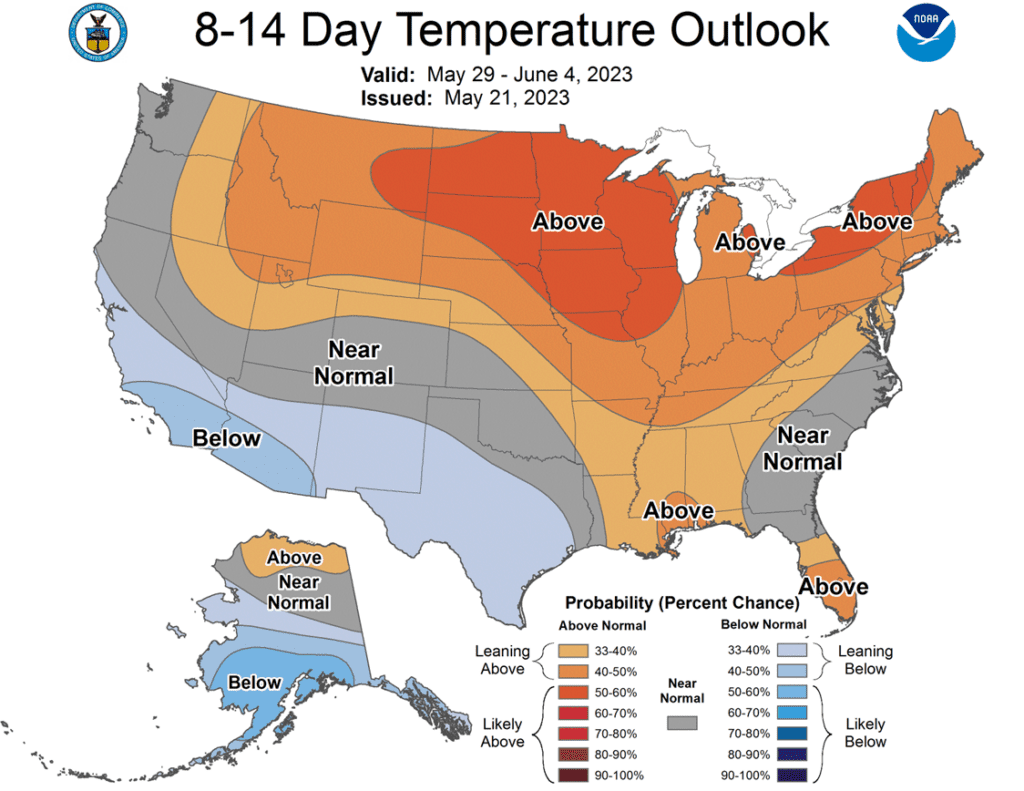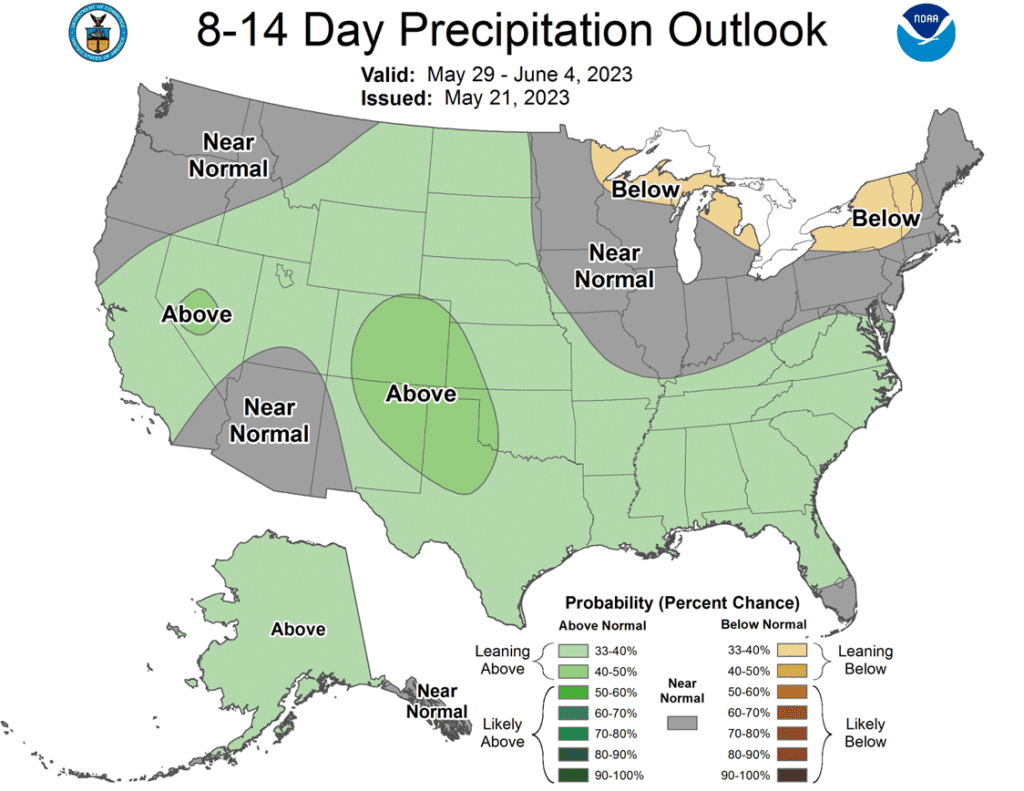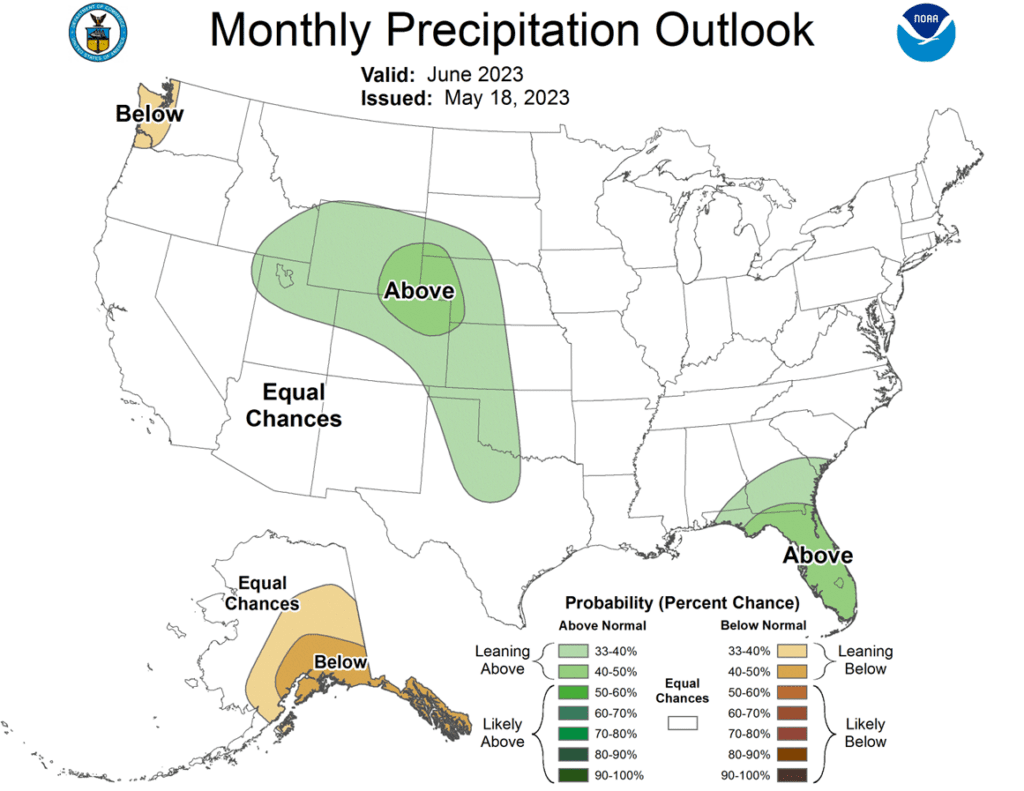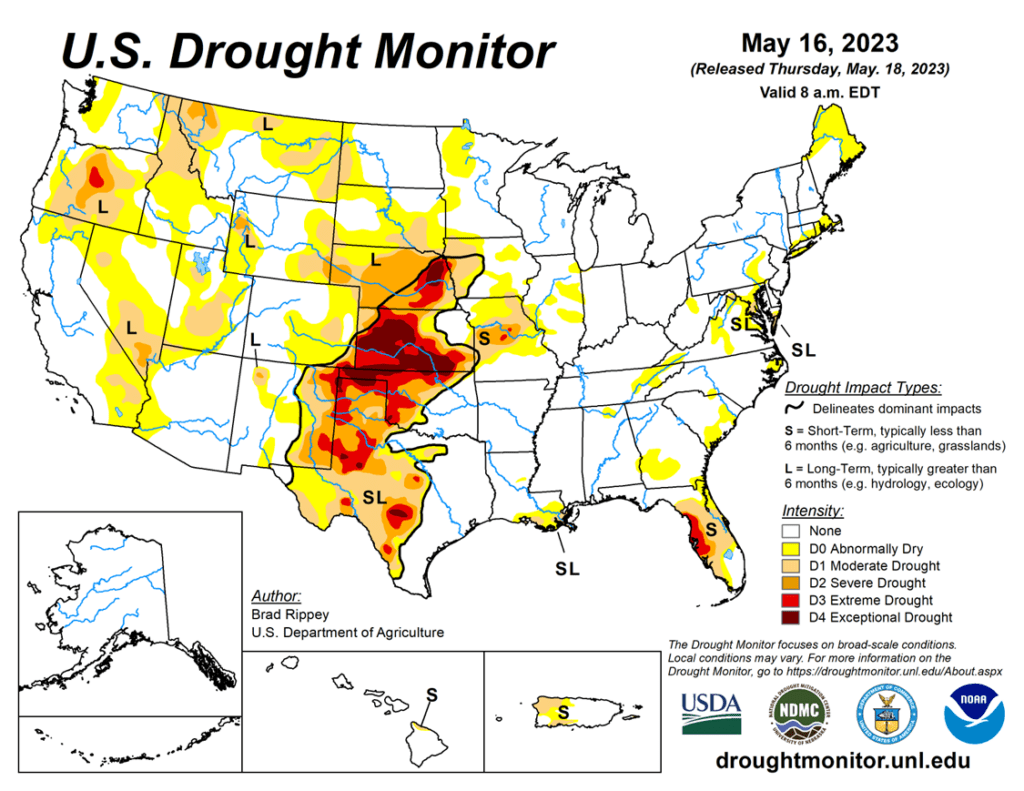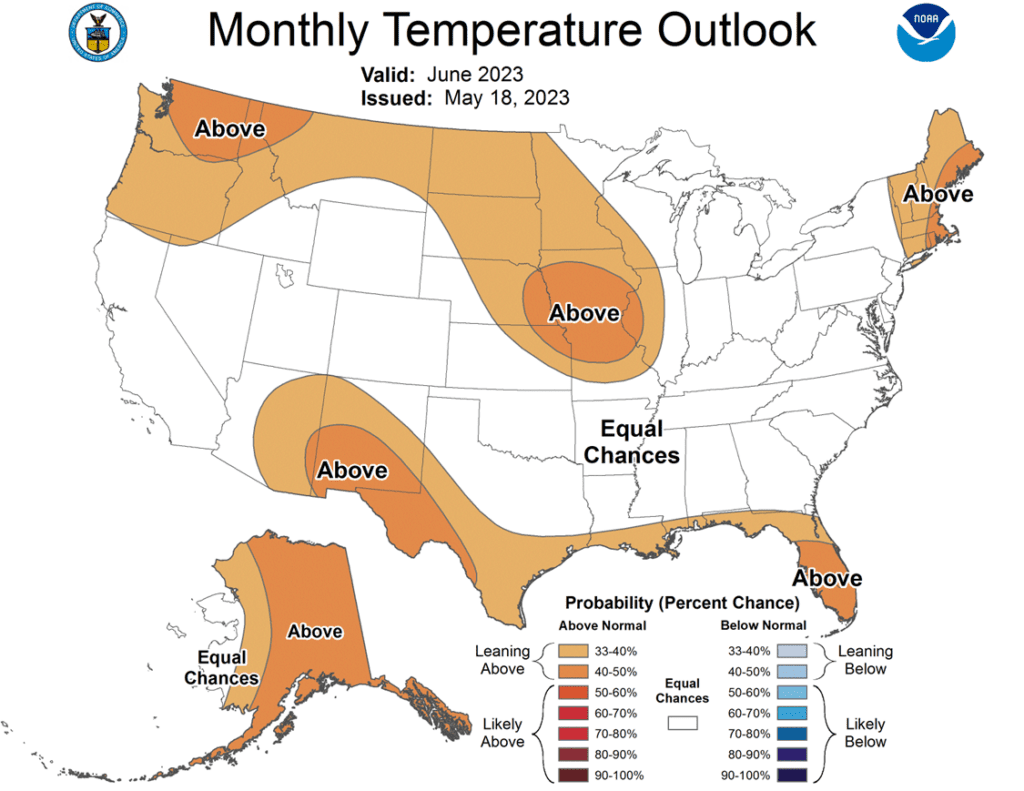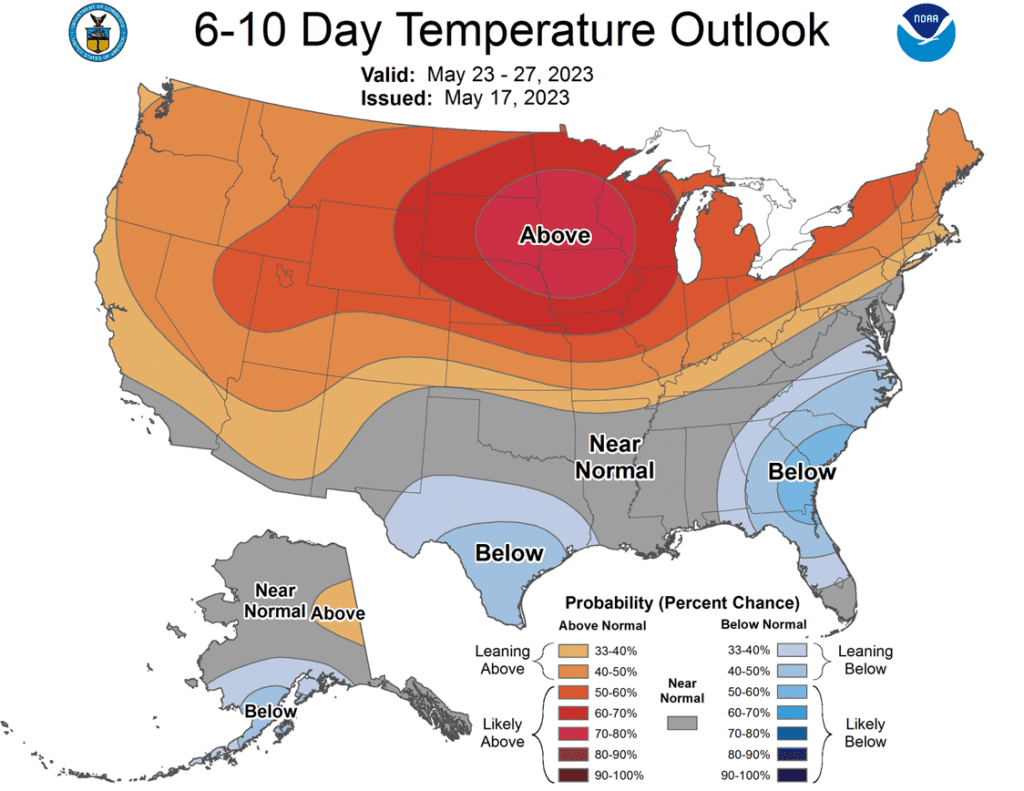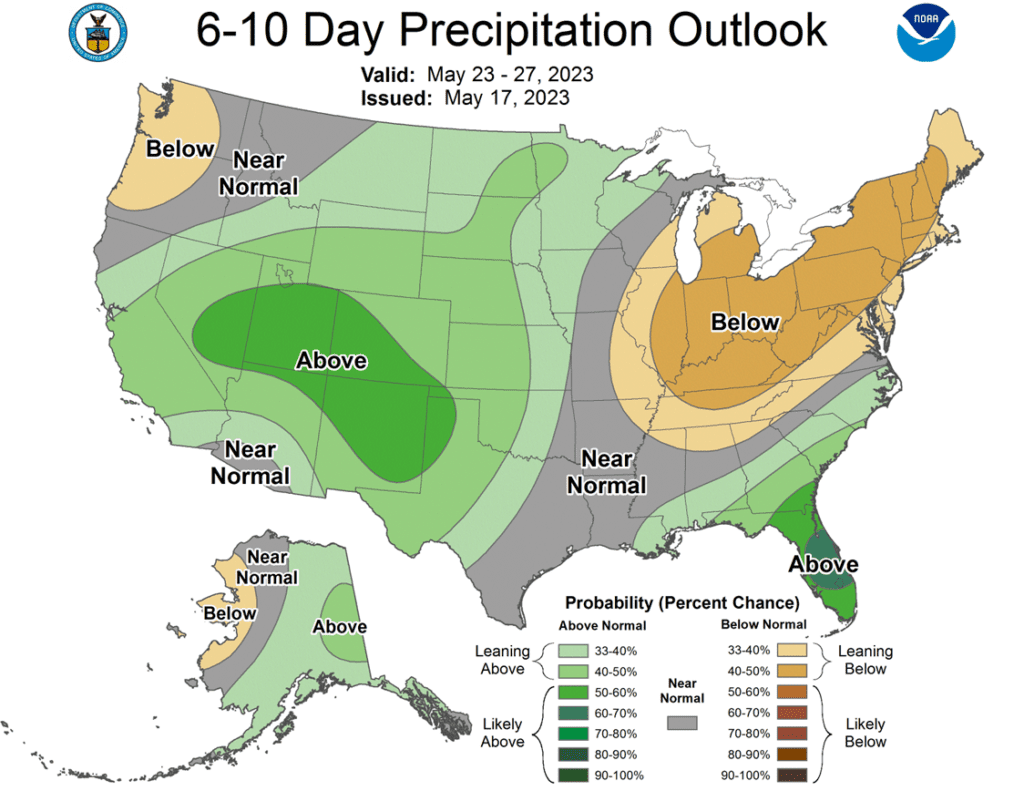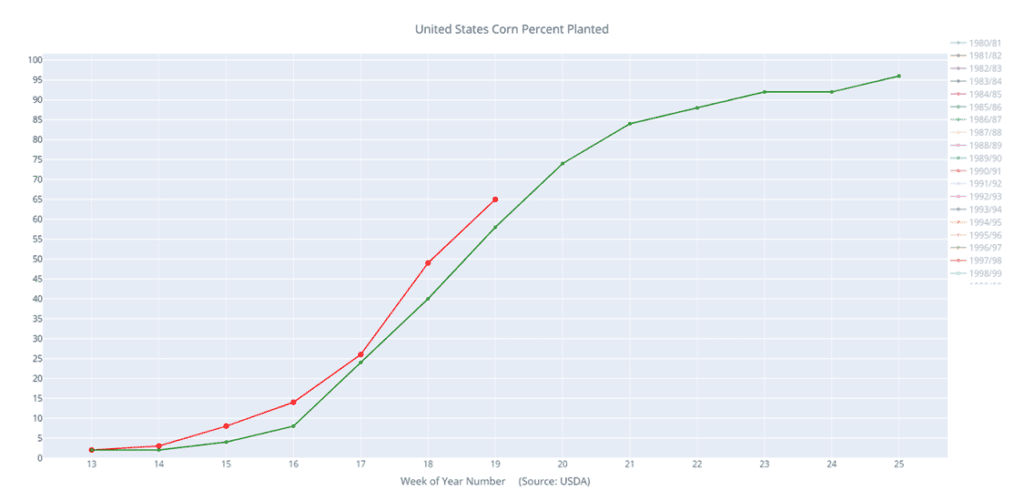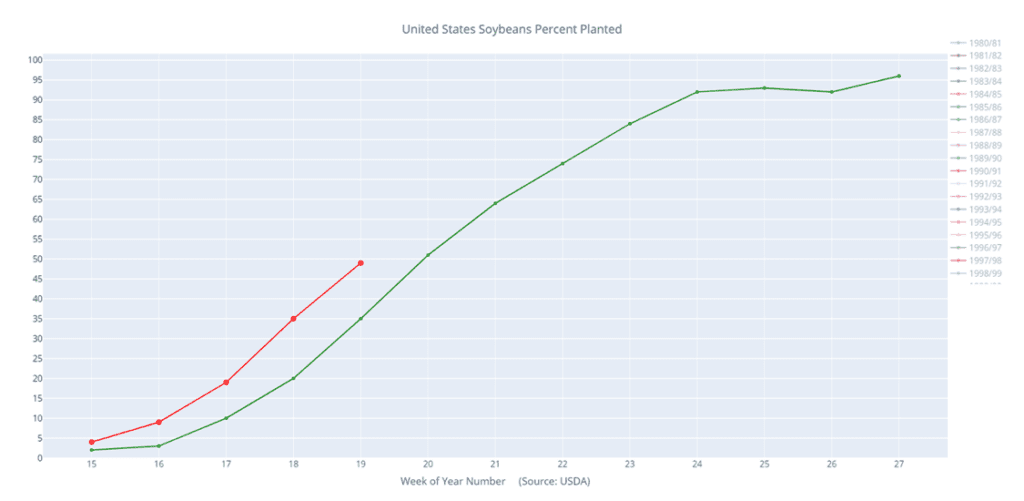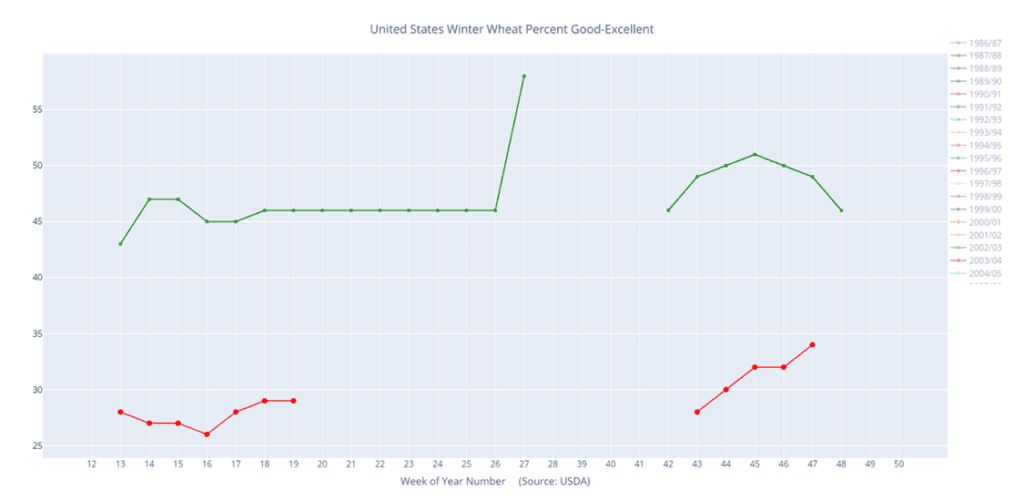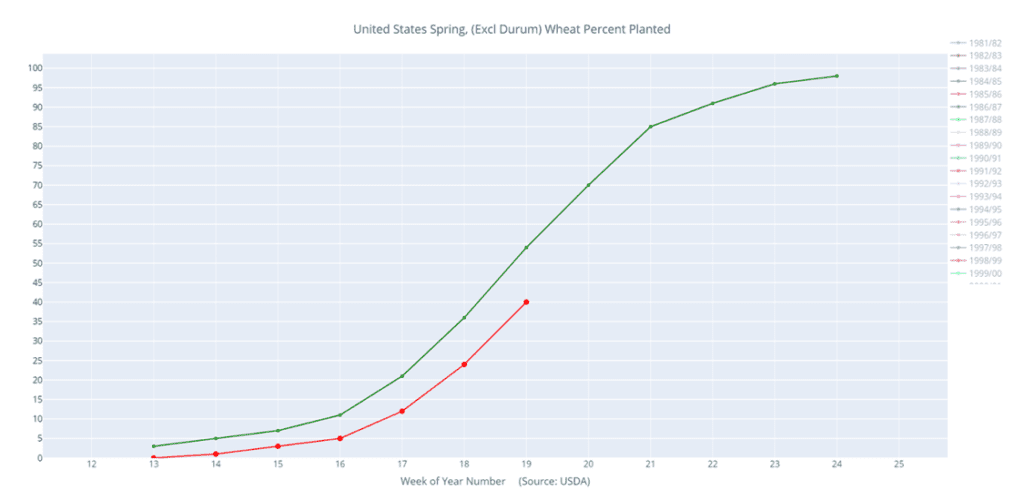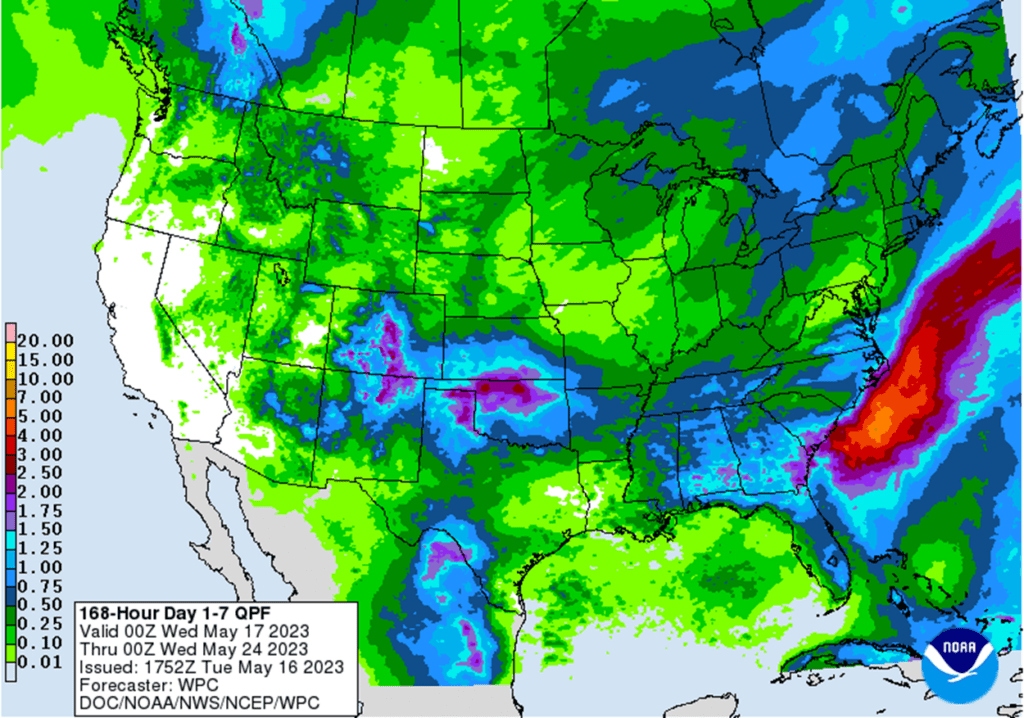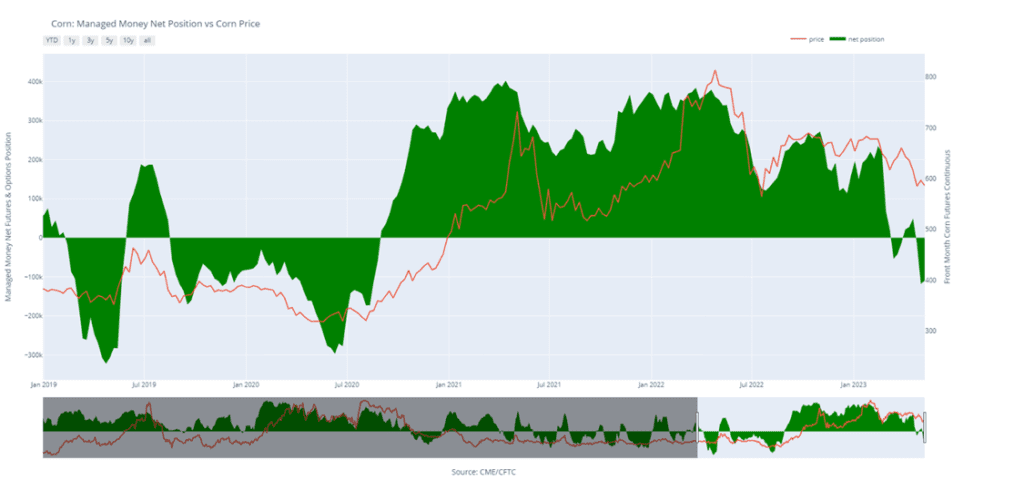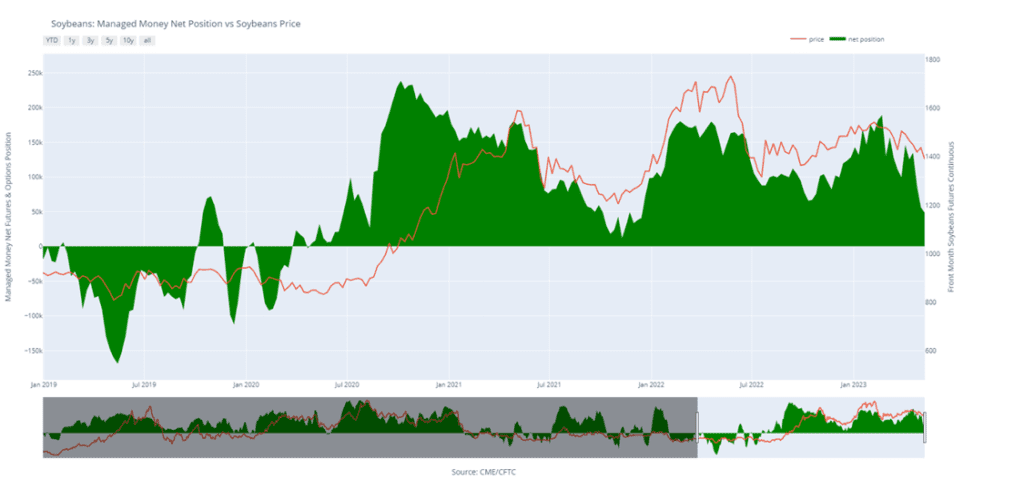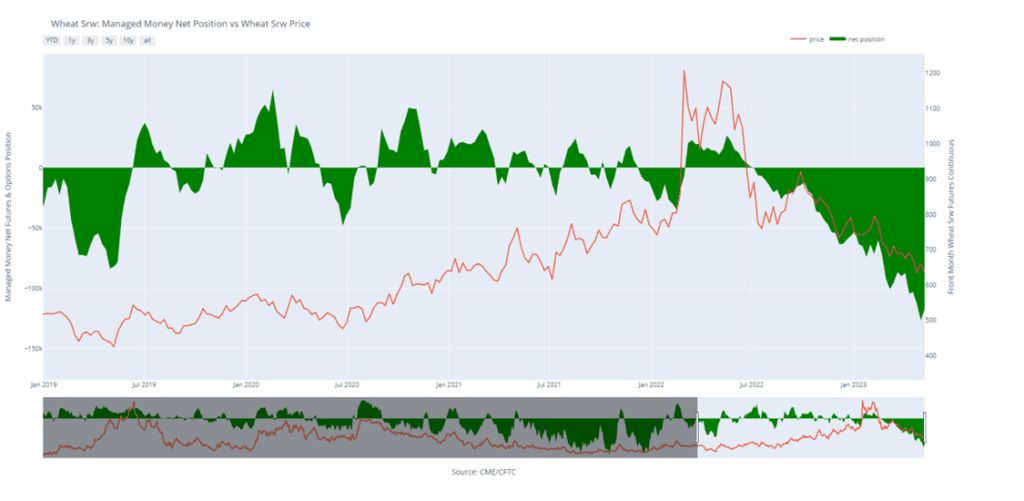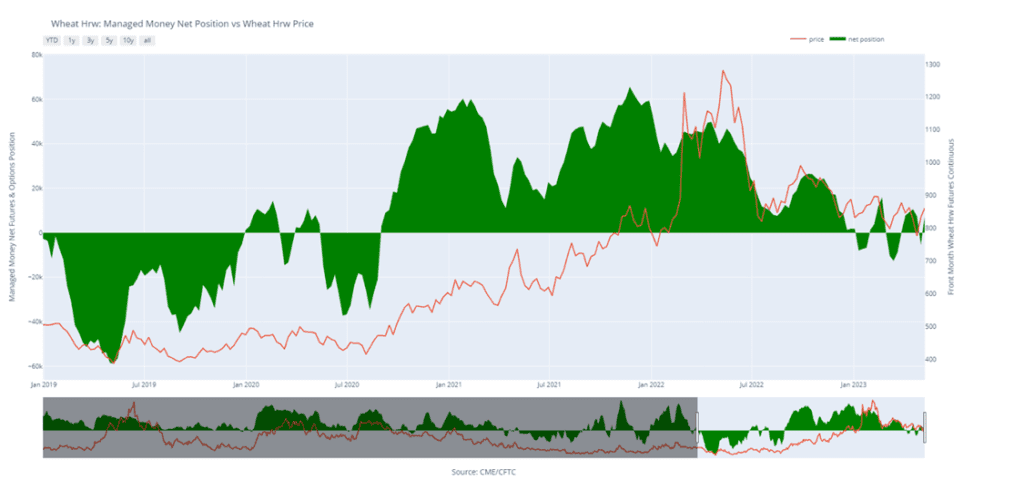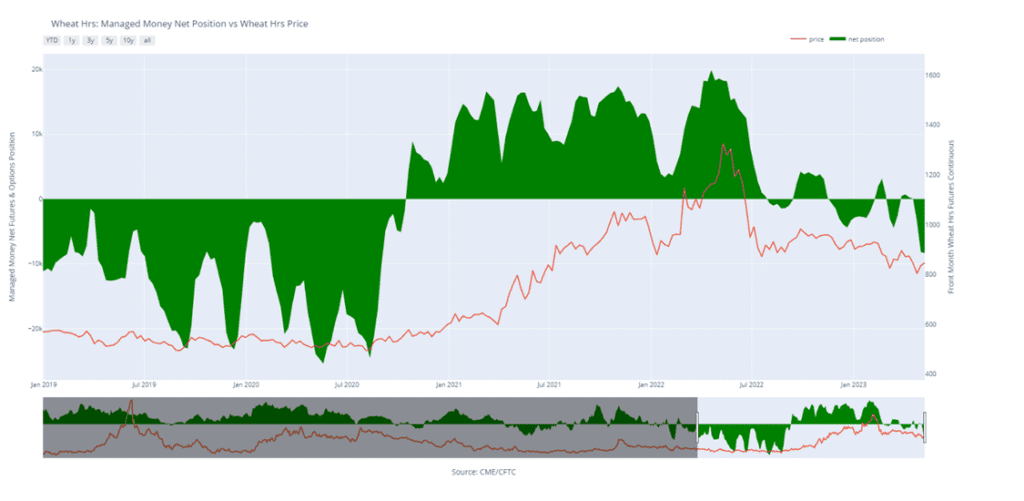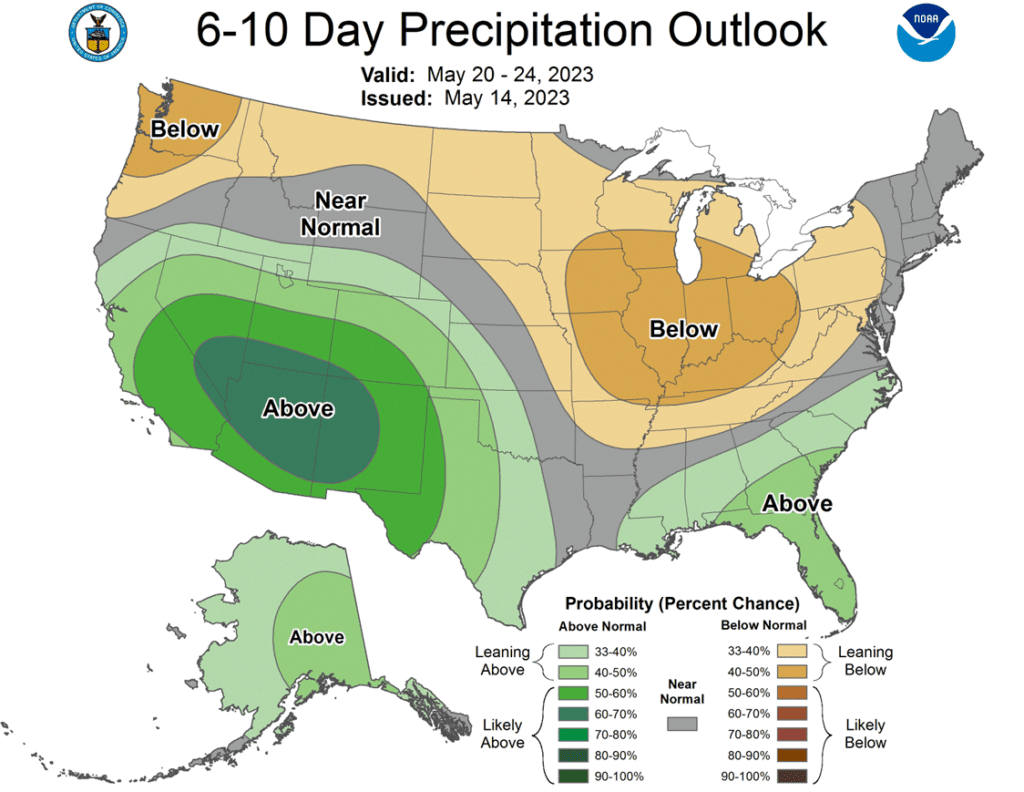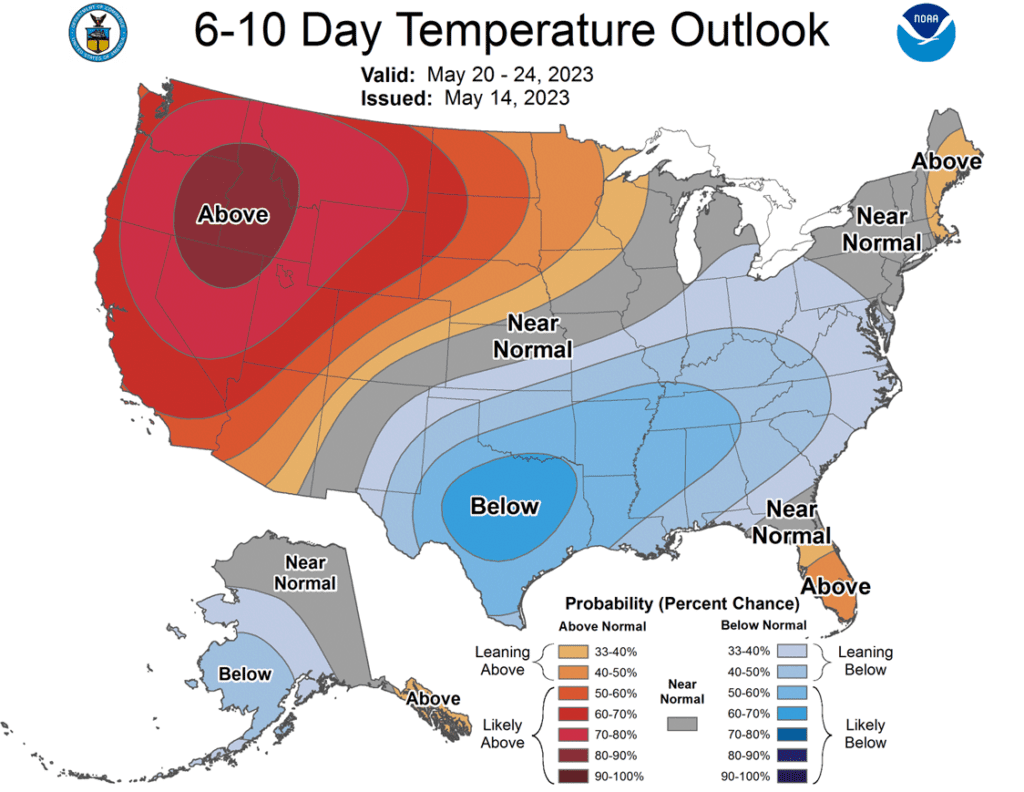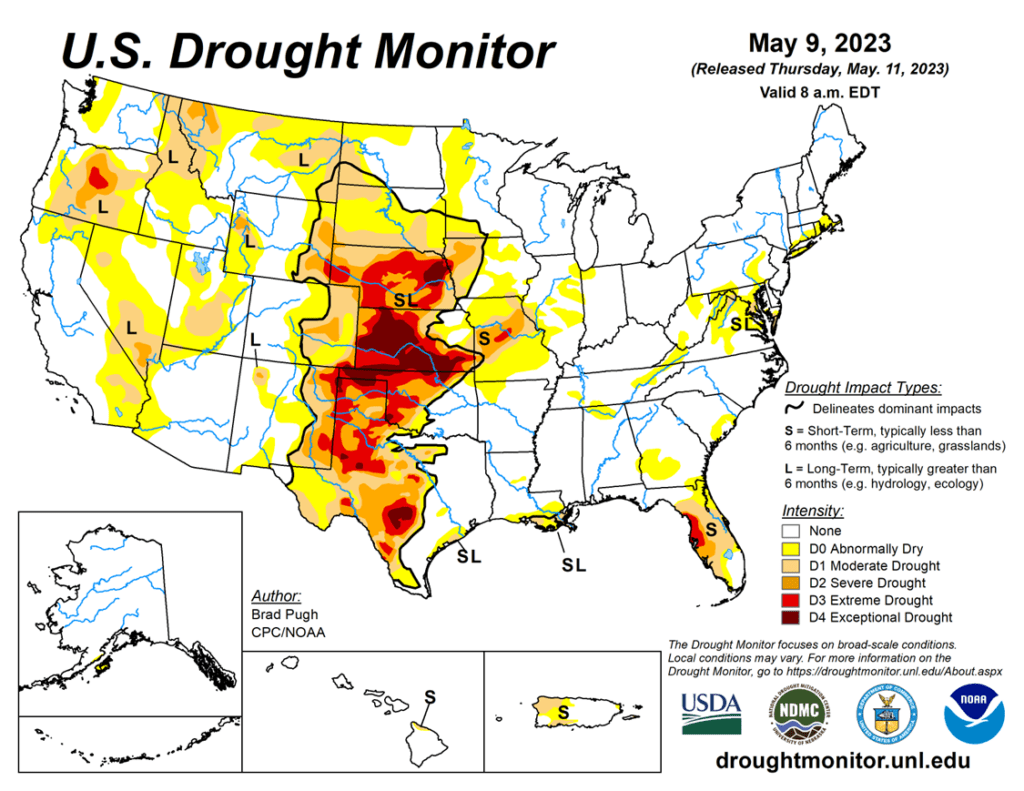Grain Market Insider: May 25, 2023
The CME and Total Farm Marketing offices will be closed
Monday, May 29, 2023, in observance of Memorial Day
All prices as of 1:45 pm Central Time
Grain Market Highlights
- Corn closed mixed with old crop prices moving higher for the fourth consecutive day. Export sales were disappointing for both 22/23 and 23/24.
- Soybeans closed lower with new crop prices breaking below their recent lows. A continued push higher in the US dollar and poor soybean export sales added pressure.
- Above average 22/23 soybean meal export sales did not help support soybean meal today, and soybean oil traded higher with palm oil despite a sharp drop in crude.
- Wheat settled mixed across the board with HRW posting the strongest gains. Wheat export sales were a marketing year low for 22/23.
- To see updated US Drought Monitor and US 8-10 day Temperature and Precipitation Outlooks from the Climate Prediction Center, scroll down to the Other Charts/Weather Section.
Note – For the best viewing experience, some Grain Market Insider content is best viewed with your phone held horizontally.
Corn
Corn Action Plan Summary
- No action is recommended at this time for Old Crop. July corn touched the lower end of the target range of 575 – 600 with a high of 575-1/2, which put it 30 cents off last week’s low. If you still have Old Crop bushels to sell, consider using this rally to begin pricing some of those remaining bushels and adding incremental sales up to 600. Another thing to consider is that there is about a 65-cent inversion from the July contract to the September contract, which may be lost when bids roll from one contract to the other in the next month or so.
- No action is currently recommended for the 2023 new crop. Planting is nearly complete and the volatile weather months still ahead. December corn has dropped nearly 120 cents from its January high, and with that drop, much of the weather risk premium has eroded away. With drought still looming in the WCB and the funds carrying a 92k contract short position, we continue to target the 590 – 630 range in the December futures to suggest adding cash sales. If you happen to not have any New Crop sold, you should consider targeting the 550 – 560 area to begin pricing bushels.
- Continue to hold current sales levels for the 2024 crop year. We will look for opportunities to make further sales as we move through the 2023 growing season as weather volatility builds.

- July corn was the strong leg of the corn market as a firm cash market tone and end user buying supports the old crop prices, but weak demand tone pressured the corn market overall.
- USDA weekly export sales were disappointing again this week For the week of May 12-18, old crop sales saw net reductions of 75,200 MT, and new crop sales of 52,100 MT, both were at the lower end of expectations. This was the third week out of the last four that old crop sales were negative on the week.
- Weather models are showing warmer temperatures and limited rainfall over the core of the Corn Belt into early June, as a high-pressure ridge is developing over this region. Weather forecasts after Memorial Day will be key for potential precipitation to develop around the June 5-6 window.
- June corn options expire on Friday, which could bring some volatility to the market as prices tend to drift to areas on large open interest. The 600 strike price holds the largest amount of open interest going into Friday.
- The trend higher in the Dollar Index continued today, as the dollar traded to its highest levels since early March, which may help limit gains in the grain commodity markets on the session.

Above: The corn market has recovered somewhat from being oversold, and stochastic indicators have crossed back over to the upside, which can be supportive. The July contract has found support between 550 and 530, with further support near the 2021 September low of 497-1/2. Nearby resistance sits near 600 and again near the 50-day moving average.

Soybeans
Soybeans Action Plan Summary
- July soybeans found support last week just above the 1300 level. While the month of May has been a rough one for the soy complex, the market remains in a seasonal window conducive for upside volatility and opportunity. Given the oversold nature of the market, combined with a still tight Old Crop domestic balance, continue to hold on progressing any Old Crop sales for now.
- We recommend not adding to current sales levels for the new 2023 crop at this time. As we continue through planting season, favorable weather conditions and South American competition have pressed US prices down nearly 17% from the beginning of the year. The potential remains for a tighter New Crop balance sheet, as the US Drought Monitor map remains concerning. We would consider recommending the next sales in the 1350 to 1400 area.
- Continue to hold off on pricing the 2024 crop. We look to make sales further into the 2023 growing season when selling opportunities tend to improve seasonally.
- Soybeans traded lower today, with most of the losses in the deferred months and July only closing half a penny lower. Poor soybean export sales and the decline in soybean meal weighed on the bean market. Soybean oil closed higher despite lower crude.
- Soybean meal export sales were a bright spot today coming in at 341,000 tons for 22/23. Poland was the top noted soybean meal buyer last week.
- The weekly export sales report reported increases of 4.2 mb of soybean export sales for 22/23, a low number, but at least there were not any net cancellations. Export shipments were 10.6 mb and were above the 13.0 mb needed each week.
- Palm oil closed 3% higher today, finally showing signs of life as the Malaysian Palm Oil Board raised some concerns about production in the coming year with El Niño potentially becoming a problem in southeast Asia. This should support soybean oil.
- Brazil’s record soybean crop is now estimated near 157 mmt, while Argentina is expecting just 21 mmt, significantly less than the USDA’s estimate of 27 mmt. Rains are also now slowing down harvest in Argentina.

Above: Soybean prices have fallen to near 1300 and have found some support near 1304. The market continues to show signs of being oversold and appears to be consolidating. Stochastic indicators have crossed to the upside, which is considered positive, and could be supportive if reversal action occurs. Should the 1304 support level fail, the next area of support may be found near the July 2022 and November 2021 lows of 1288 and 1181 respectively.

Wheat
Market Notes: Wheat
- The USDA reported a net cancellation of 1.7 mb of wheat export sales for 22/23, but an increase of 9.0 mb for 23/24.
- The wheat complex had an overall mixed close with Chicago contracts lower, with gains in K.C. and Minneapolis futures. Even though rains are popping up over the western Plains, and the SRW areas are mostly dry.
- Some of today’s weakness may have stemmed from rains beginning to fall in Argentina. While it is too late to help corn and beans, it may improve soil moisture for their wheat planting.
- Russian wheat export FOB offers are now said to be as low as $240 per ton, as they continue to dominate the export front.
- It has been confirmed that EU wheat has been imported from Germany and Poland into the southeastern US, contributing to weakness of futures.
- There are potential demand concerns down the road, with reports that China’s economy is slowing, China has a rise in covid cases, and as of this writing, there has been no resolution to the US debt ceiling issue. This has also sent energy and financial markets lower, acting as an anchor on the grain complex.
Chicago Wheat Action Plan Summary
- No new action is recommended for the 2022 crop. The market is down more than 300 cents from its October high and has become extremely oversold. The July contract may also post its 8th consecutive down month in a row at prices not seen since early 2021, even though wheat inventories of major exporting countries are anticipated to fall to 16 year lows. With the market being this oversold and a fund net position short nearly 113k contracts, we continue to eye the 640 – 670 range to clean up and market any remaining Old Crop inventory.
- We recommend not taking any action on the 2023 crop at this time. While the window of opportunity is quickly closing for Old Crop, it is still wide open for better opportunities ahead for New Crop. We are currently targeting a more aggressive window of 720 – 800 to suggest advancing sales and move more New Crop inventory.
- No action is currently recommended for the 2024 crop. While we are looking for stronger markets to present themselves in this currently weak environment, there are factors that could be supportive, should they occur. Such as any escalation of the Ukraine war or disruption of grain movement in the Black Sea, or a significant devaluation of the US Dollar back to 2021 levels, as that market is showing characteristics of a potential drop.

Above: The July contract posted a bullish reversal on 5/23 indicating support between 593 and 565 has held so far. Any follow through buying from this reversal could trigger fund short covering and fuel a bigger bounce to test nearby resistance between 655 and 669, with further resistance near the April high of 718.
KC Wheat Action Plan Summary
- No new action is recommended for the 2022 crop. Though most, if not all, of your Old Crop 2022 wheat may be sold, consider storing any remaining Old Crop, if possible, in anticipation of a short new crop this year, and marketing it along with the new crop.
- We continue to look for better prices before making any 2023 sales. Crop ratings overall are at historically low levels, and production concerns persist. Additionally, any unforeseen geopolitical changes in the Black Sea region could cause the market to bounce and retrace 25% towards the 2022 high.
- Patience is warranted for the 2024 crop. The 2024 market has limited liquidity, and it may be until mid-summer before recommendations are posted.

Above: Following the recent break, the July contract posted a bullish reversal on 5/22, indicating short-term support near 807. The break below Tuesday’s (5/23) low puts the 807 support level in jeopardy, with the next major support level between 736 and 716 if it does not hold. If 807 can hold, follow-through buying may put the market in position to rally and test resistance between 885 and 917.
Mpls Wheat Action Plan Summary
- No action is currently recommended for the 2022 crop. With planting concerns and a seasonal tendency for old crop prices to increase over the next 4-5 weeks, we are continuing to wait for better prices to develop. The calendar is becoming a constraint though, and we’ll be looking to part with any remaining old crop bushels by mid-June or so.
- No action is recommended on the 2023 crop at this time. Wet conditions have delayed some planting and raised some prevent planting concerns which could continue to influence the market and generate better selling opportunities in the coming months. We are in no hurry to sell right now with everything going on.
- We continue to be patient to market any of the 2024 crop. The market for the 2024 crop continues to be illiquid, and it may be early summer before we post any recommendations, continue to be patient.

Above: The July contract posted a bullish reversal on 5/22, indicating the market has found short-term support near 793. Technical follow-through buying could put the market in position to test resistance between 830 and 855 and then the recent high of 888-1/2. If not, support below 793 may be found between 770 and 760.

Other Charts / Weather
